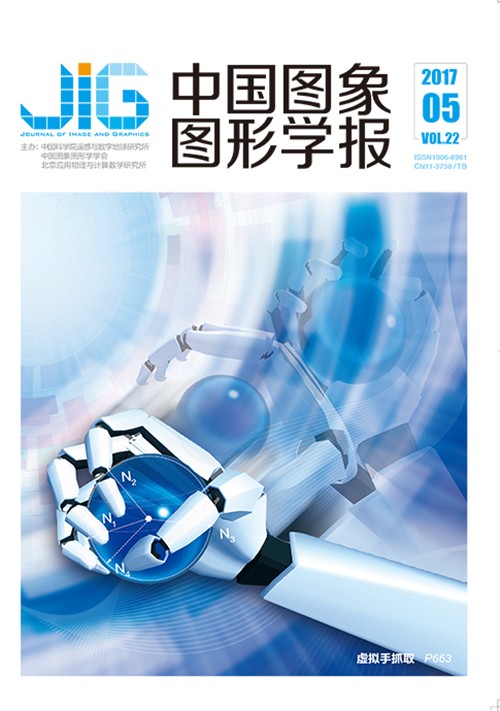
广义统计区域合并的SAR图像浮筏养殖信息提取
摘 要
目的 海水浮筏养殖是海域使用动态监测中的重要类型,合成孔径雷达(SAR)卫星遥感影像可以克服海洋气象环境的影响,有效反映浮筏养殖区域。由于浮筏养殖信息受乘性相干斑噪声污染严重,为了降低噪声敏感性,改进得到广义局部二值模式(GLBP),进而将其用于改进广义统计区域合并算法(GSRM),构建以GLBP_GSRM为核心的多特征集成模型,得到更具纹理一致性的超像素,实现浮筏养殖信息精确提取。方法 根据SAR数据的乘性噪声特性改进局部二值模式算子得到GLBP算子,将其加入GSRM的合并准则中,结合纹理信息的超像素分割能得到更具纹理一致性的超像素,有效抑制相干斑噪声。进而利用非下采样轮廓波变换得到轮廓信息丰富数据特征,使用FCS(fuzzy compactness and separation)算法聚类实现浮筏养殖信息的无监督提取。结果 实验选取辽宁省长海县邻近海域作为研究区域,针对C波段的Radarsat-2 SAR和X波段的TerraSAR图像,分别比较同一图像不同区域和不同图像同一区域的提取结果,结合实地现场调查结果表明所提模型对不同类型SAR图像均能精确无监督地提取浮筏养殖信息,分类精度均高于85%,明显优于经典无监督算法,验证模型的有效性。结论 所提模型充分集成纹理特征、空间特征和轮廓特征,有效解决相干斑噪声干扰信息提取的问题,针对不同类型SAR遥感图像,均能在复杂的海洋背景中实现有效地无监督浮筏养殖信息提取,提高海水养殖自动监测准确度。
关键词
Modifying generalized statistical region merging for unsupervised extraction of floating raft aquaculture in SAR images
Hu Yuanyuan1,2, Fan Jianchao2, Wang Jun1(1.Dalian University of Technology, Dalian 116024, China;2.National Marine Environment Monitoring Center, Dalian 116023, China) Abstract
Objective Marine floating raft aquaculture is widely distributed in nearshore zones. The effective information extraction of floating raft aquaculture is conducive to the dynamic monitoring of sea area uses, which can rationally use marine aquaculture resources and create a healthy balance of sea ecological environment. Satellite synthetic aperture radar (SAR) imagery can overcome the influences of the marine meteorological environment and effectively reflect the locations of floating rafts. However, the information of floating raft aquaculture in SAR images is seriously affected by multiplicative speckle noise. Considerable isolated noise points exist on the surface of floating raft aquaculture, and the edges are so fuzzy that clearly distinguishing floating raft aquaculture from the sea background is difficult. The traditional unsupervised algorithm is ineffective for not taking the characteristics of SAR data into account. To solve the problem, this study improves the local binary pattern algorithm to generate the generalized local binary pattern (GLBP), which reduces noise sensitivity and obtains texture features according to SAR data characteristics. The GLBP is then added to the merging criterion of the generalized statistical region merging (GSRM). A multi-feature integration model is constructed based on GLBP_GSRM to acquire superpixels with highly consistent texture features and achieve accurate extraction of the information on floating raft aquaculture. Method Given that SAR data are characteristics of multiplicative noise, the local binary pattern operator is improved to obtain the GLBP operator. The GLBP is then added to the merging criterion of the GSRM to raise the merging requirement and acquire superpixels. Superpixel segmentation with texture information can be used to obtain texture-consistent superpixels and effectively overcome the high contamination of speckle noise. Nonsubsampled contourlet transform (NSCT) is utilized to obtain the contour feature and enrich the data feature. The fuzzy compactness and separation algorithm is used to cluster and achieve the unsupervised extraction of floating raft aquaculture. Result In the experiments, the sea area near Changhai County in Liaoning Province is selected as the research area. The images of Radarsat-2 SAR with C-band and of TerraSAR with X-band are used. Different regions in the same image and the same region in different images are selected. Experimental results are compared with real results of the field survey and show that the proposed model can precisely extract information of floating raft aquaculture in SAR images with different types. Moreover, the proposed model is distinctly superior to the classical unsupervised algorithms. The classification accuracies in three experiments are 88.31%, 85.02%, and 85.52%, which prove the effectiveness of the proposed model. A comparison of the experimental results of different regions in the same image indicates that, although the backscattering properties of different regions are different and the experimental data of two regions are affected by the speckle noise differently, the proposed method can still accurately and effectively extract the information of floating raft aquaculture. A comparison of the experimental results of the same region in different images with different bands and resolutions presents that, although the capturing time interval of images is several months and the floating raft aquaculture also has some changes, the backscattering characteristics of the same region are similar and seriously affected by the speckle noise. Experimental results show that the proposed model can accurately extract the floating raft aquaculture information of the same region in different SAR images with different resolutions. Some experiments also analyzed the contribution of each part of the model, and the results show that the superpixel segmentation algorithm GLBP_GSRM can obtain superpixels with high texture consistency and reduce the isolated points in the entire image. The contourlet feature obtained from the NSCT enriches the feature of the raw data and can make areas of floating raft aquaculture more complete with smooth edges. In brief, the proposed model can effectively overcome the high contamination of the speckle noise and precisely extract the information of floating raft aquaculture. Conclusion The proposed model utilizes the texture feature, spatial feature, and contour feature to solve the problem of speckle noise jamming information extraction. In SAR images with different types, the proposed model can effectively extract the information of floating raft aquaculture from complex oceanic backgrounds and improve the automatic monitoring accuracy of marine aquaculture. The idea of the proposed model can be widely applied to the information extraction of other types in sea areas and make it more convenient to dynamically monitor the sea area. However, in this study, SAR images with different bands and resolutions are used in the experiments and are unable to explore the resolution influence. Therefore, the next research is to study SAR data with different resolutions in the same band and explore the resolution effect on the information extraction of floating raft aquaculture.
Keywords
floating raft aquaculture synthetic aperture radar(SAR) unsupervised local binary pattern statistical region merging
|



 中国图象图形学报 │ 京ICP备05080539号-4 │ 本系统由
中国图象图形学报 │ 京ICP备05080539号-4 │ 本系统由